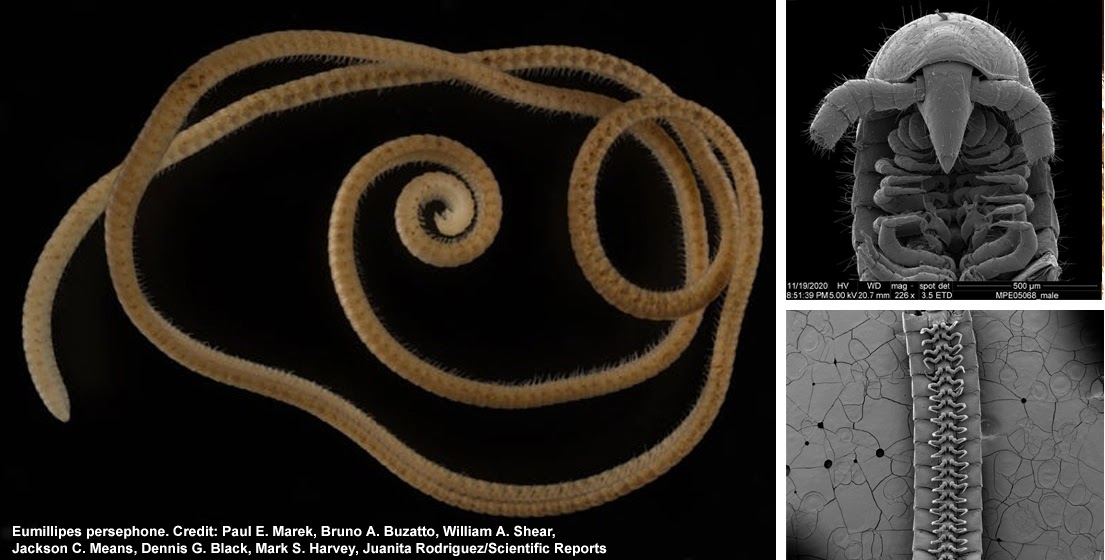
Newfound Millipede Sets Record for Animal With Most Legs
According to a study published Thursday in the journal Scientific Reports, researchers discovered the flamboyantly limbed creature in a mining excavation site in western Australia. The discovery brings us one step closer to comprehending these enigmatic creatures, which may be on the verge of extinction.
The new millipede species have been named Eumillipes Persephone; after the Greek goddess of the underworld Persephone, It is the first millipede known to have more than 1,000 legs.
"This is super exciting for me," said Associate Professor Paul Marek, an entomologist at Virginia Tech in the United States and lead author of the study, who first learned about the creature in September 2020 when he received an e-mail from Dr. Bruno Buzatto.
Dr. Buzatto, a biologist with Bennelongia Environmental Consultants in Western Australia, had attached images of a pale creature with no eyes but many legs. It was only a few inches long and less than a millimeter wide.
Dr. Buzatto discovered the threadlike animal living deep underground — up to 200 feet underground in Western Australia's narrow boreholes. Mining companies dig these holes to look for minerals like gold and nickel, and they hire environmental consultants to look into how mining might affect wildlife. Dr. Buzatto, one of those consultants, had baited traps with damp leaf litter, dropped them down boreholes, and later reeled in eight of the threadlike animal.
"Previously, no known millipede had 1,000 legs, despite the name millipede meaning 'thousand feet,'" said Paul Marek.
Marek examined four specimens in total, two males and two females of varying lengths and ages. The shortest of the bunch had 198 rings and 778 legs. The longest had 330 rings and 1,306 legs.
Until now, the longest-legged animal known was Illacme plenipes, a millipede species from California with 750 legs.
"It was mind-boggling because it's almost double the previous number of legs in millipedes," Dr. Marek said. "Seven hundred and fifty seems like a lot of legs for an animal." "One thousand three hundred and six is pretty astounding."
Male versions of the newly discovered specimen have fewer legs than females. According to the study, one of the grown-up female E.persephone had 1,306 legs, while the other had 998. On the other hand, one grown-up male E.persephone had 818 legs, while the other had 778.
Marek explained that The organisms in the new species have a long, threadlike eyeless body that measures 3.76 inches in length and comprises 330 segments. It also has a 0.03-inch-wide body, short legs, and a cone-shaped head with antennae and a beak. The antenna compensates for the lack of vision and is essential for navigation at such depths, whereas the beak serves as a tool for eating.
The researchers believe it eats fungi because it belongs to a family of fungal-eating millipedes.
According to Marek, the discovery demonstrates that "there are a lot more discoveries to be made," according to Marek. And, while species that live so deep beneath our feet may appear disconnected from life on the surface, these ecosystems play an important ecological role linked to surface life, according to Marek.
The study was published in Scientific Reports.

0 Response to "Newfound Millipede Sets Record for Animal With Most Legs"
Post a Comment